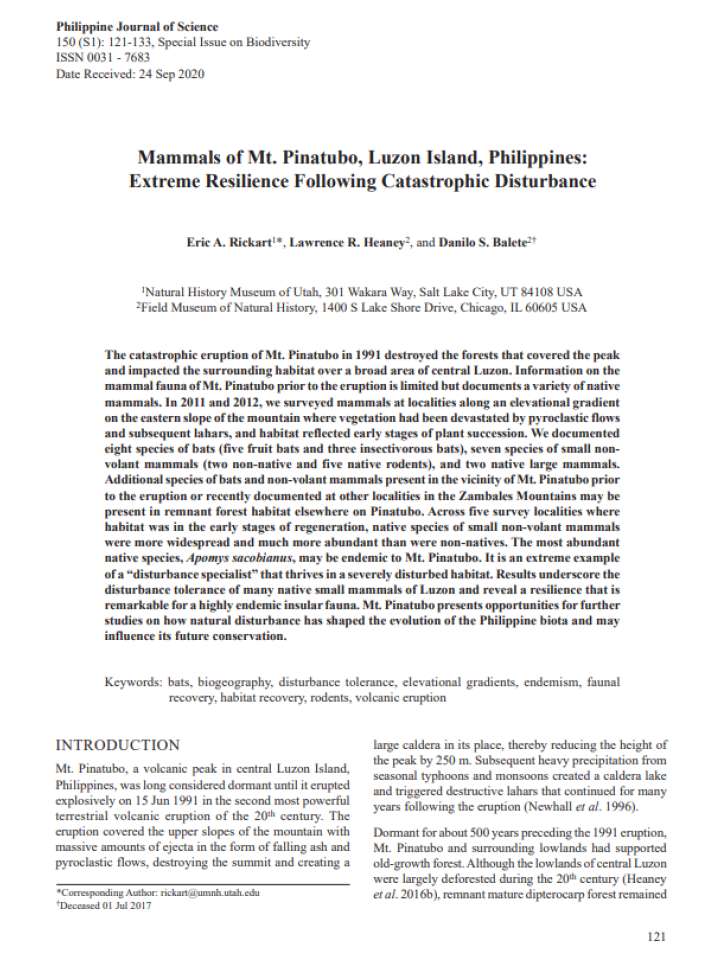Mammals of Mt. Pinatubo, Luzon Island, Philippines: Extreme Resilience Following Catastrophic Disturbance
The catastrophic eruption of Mt. Pinatubo in 1991 destroyed the forests that covered the peak and impacted the surrounding habitat over a broad area of central Luzon. Information on the mammal fauna of Mt. Pinatubo prior to the eruption is limited but documents a variety of native mammals. In 2011 and 2012, we surveyed mammals at localities along an elevational gradient on the eastern slope of the mountain where vegetation had been devastated by pyroclastic flows and subsequent lahars, and habitat reflected early stages of plant succession. We documented eight species of bats (five fruit bats and three insectivorous bats), seven species of small nonvolant mammals (two non-native and five native rodents), and two native large mammals. Additional species of bats and non-volant mammals present in the vicinity of Mt. Pinatubo prior to the eruption or recently documented at other localities in the Zambales Mountains may be present in remnant forest habitat elsewhere on Pinatubo. Across five survey localities where habitat was in the early stages of regeneration, native species of small non-volant mammals were more widespread and much more abundant than were non-natives. The most abundant native species, Apomys sacobianus, may be endemic to Mt. Pinatubo. It is an extreme example of a “disturbance specialist” that thrives in a severely disturbed habitat. Results underscore the disturbance tolerance of many native small mammals of Luzon and reveal a resilience that is remarkable for a highly endemic insular fauna. Mt. Pinatubo presents opportunities for further studies on how natural disturbance has shaped the evolution of the Philippine biota and may influence its future conservation.
